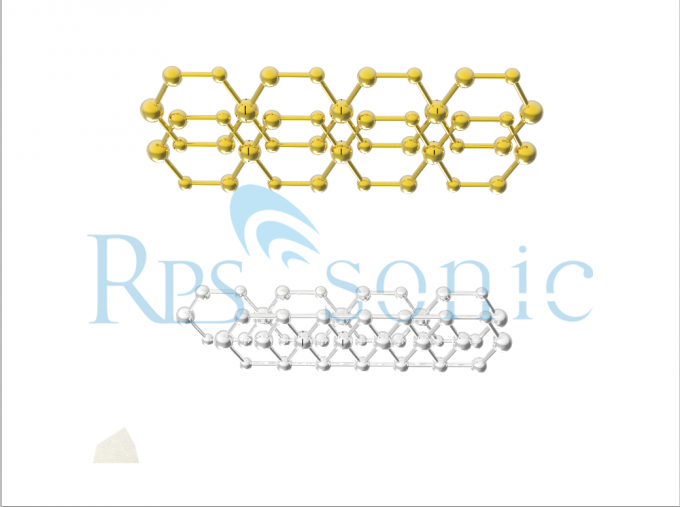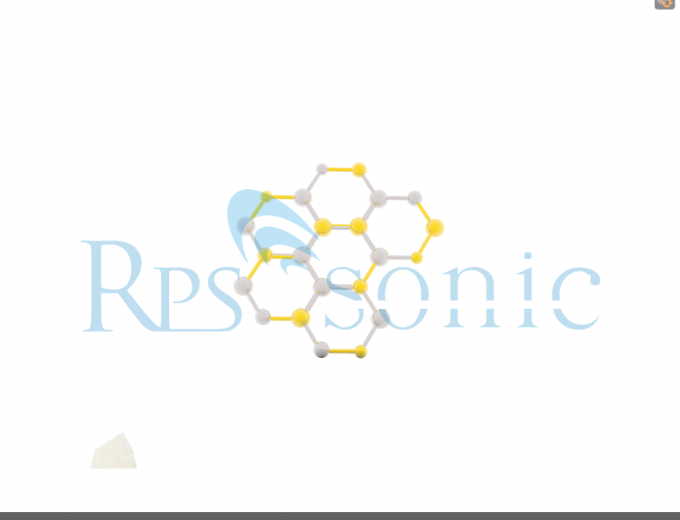Laboratory Scale Ultrasonic Liquid Processor With Digital Generator
Description| Frequency: | 20khz | Power: | 500W |
|---|---|---|---|
| Generator: | Digital Generator | Horn: | Titanium Alloy |
| Capacity: | 5 L/Min | ||
| High Light: | ultrasonic homogenizer sonicator,ultrasonic dispersion equipment | ||
laboratory-scale ultrasonic liquid processor high power 20khz
Parameter
Introduction:
Ultrasonic cell disruption is an effective means to destroy cell structure. This effect can be used to extract substances inside cells. For example, starch is extracted from the cell matrix. Ultrasound produces alternating high and low pressures in exposed liquids. During the low-pressure cycle, the ultrasonic waves generate small vacuum bubbles in the liquid. During the high-pressure cycle, the small vacuum bubbles rupture violently. This manifestation is called cavitation. Implosion of cavitation bubbles causes strong hydrodynamic shear forces. Shear force can break down fibers, fibrous materials into cell particles and destroy the structure of the cell wall. This releases substances inside the cell, such as starch and sugar, into the liquid.Ultrasonic extraction uses the multi-stage effects such as the strong cavitation stress effect, mechanical vibration, disturbance effect, high acceleration, emulsification, diffusion, crushing and stirring effects generated by the pressure of ultrasonic radiation, increasing the frequency and speed of material molecules and increasing solvent penetration The penetrating power accelerates the target ingredients into the solvent and facilitates the extraction.
Application:
Application in Nicotine ExtractionThe nicotine component in tobacco has a high value in agriculture and medicine. The use of ultrasonic extraction technology can effectively extract the nicotine component in tobacco. In this application research, the researchers mainly investigated the effects of extractant concentration, solid-liquid ratio, extraction time, and ultrasonic temperature on the extraction efficiency of nicotine components. Comparative analysis shows that the effect of ultrasonic extraction is significantly better than that of heated reflux extraction (the latter is only 84.79%).Application of Lycium barbarum polysaccharide extractionThe extraction process of lycium barbarum polysaccharides using ultrasonic extraction, the content of lycium barbarum polysaccharides was measured by spectrophotometric colorimetry, and the extraction process of lycium barbarum polysaccharides by ultrasonic-assisted water extraction was systematically studied through the cross-stop experiment, and the optimal process was determined, that is: at 50 ℃, 1:60 ratio of material to water, soaking for 2.5h, ultrasonic extraction for 5min.
Application in Lycopene ExtractionResearchers used ultrasonic extraction technology conditions for lycopene. The optimal process conditions were determined: the ultrasonic output power was 320W, the extraction solvent was a fragrance ester, the extraction time was 6min, each radiation time was 3s, the solid-liquid ratio was 1: 2, and the extraction level was two. Total pigment extraction rate was 96.83% [
Application of Total Flavonoids in Lotus Seed HeartUsing lotus seed heart as test material, ethanol solution as extraction agent, ultrasonic extraction method, single factor test and L9 (34) orthogonal experiment were conducted to study the ethanol concentration, extraction time, material-liquid ratio and extraction temperature on the total flavonoid extraction rate. influences. The results show that the main factor affecting the extraction rate of total flavonoids in lotus seeds is ethanol concentration, followed by extraction temperature, material-liquid ratio, and ultrasonic extraction time.The optimal extraction conditions are: ethanol concentration of 60%, extraction temperature of 70 ° C, and material liquid. The ratio is 1: 24g / mL, the ultrasonic extraction time is 30min, and the extraction rate of total flavonoids obtained under this condition is 10.86mg / g.
Application in grease extractionThe ultrasonic field can not only enhance the extraction process of substances by conventional fluids, but also enhance the extraction process of substances in supercritical states. Chen Jun et al. Conducted an experimental study on the ultrasonic-enhanced supercritical CO2 fluid extraction process. Wheat germ oil was extracted from malt germ. After supercritical fluid extraction was added to the ultrasonic field, the extraction rate of wheat germ oil was increased by about 10% without causing wheat. Degradation of germ oil. Ultrasonic extraction is very active in the research and application of oil extraction. The experiments and applications that have been carried out involve the extraction of star anise oil, almond oil, clove oil, perilla oil, and evening primrose oil.
Application in protein extractionUltrasonic extraction of proteins also has significant effects.For example, soybean protein is extracted from the processed defatted soybean material embryos by conventional stirring methods, rarely reaching 30% of the total protein content, and it is difficult to extract the thermally unstable 7S protein component. However, the above mentioned embryo can be used to pulverize its protein in water, liquefy 80% of the protein, and extract the heat-stable 7S protein component. Liang Hanhua et al. Carried out a series of experiments on ultrasonic treatment of soybean pulp of different concentrations, heat-treated soybean pulp before grinding and the separated soybean residue. The results showed that compared with the untreated soybean milk, the protein content of soybean milk had a significant increase, the increase range was 12% to 20%, which indicates that the ultrasonic treatment did improve the protein extraction rate. Role. Ultrasonic treatment can also increase the separation temperature of the slurry and reduce the viscosity of the slurry. It can be used to directly produce high-concentration (high-protein) soy milk products.
Application in the extraction of polysaccharidesCrude polysaccharides of Paeonia lactiflora were extracted from the tuber of Paeonia lactiflora. The comparison of various extraction methods showed that ultrasonic treatment at room temperature was the most ideal extraction method. Extraction of polysaccharides from Flammulina velutipes fruit bodies can be enhanced by ultrasound to increase the polysaccharide extraction rate by 76.22%. Jin Shengying et al. Used ultrasonic hot water to extract Tremella polysaccharides, the extraction rate was 5% higher than the enzymatic method, and the extraction time was greatly shortened. Yu Shujuan et al. Conducted a systematic study on the mechanism, optimization scheme, and components and structures of degraded products of Ganoderma lucidum polysaccharides extracted by ultrasound-catalyzed enzymatic methods. Compared with the process, the ultrasonic enhanced extraction operation is simple, the extraction rate is high, and no material loss and no side reactions occur in the reaction process.The research on the extraction of seaweed polysaccharides by cyclic air-lift ultrasonic smashing sargasso found that the ultrasonic wave could reach the polysaccharide extraction rate of 100 ℃ for 4 h, which was significantly higher than that of 80 ℃ for 4 h. By comparing the extraction of polysaccharides in Salviaofficinalis L. with and without ultrasound, the ultrasonic extraction is also an effective method for enhanced extraction.

